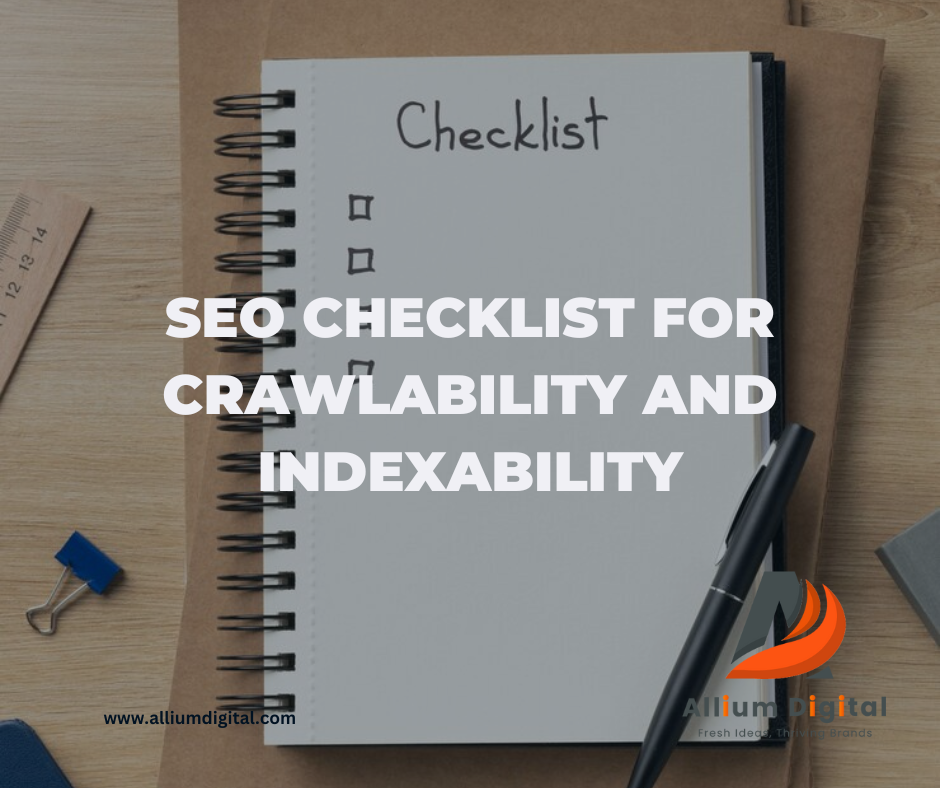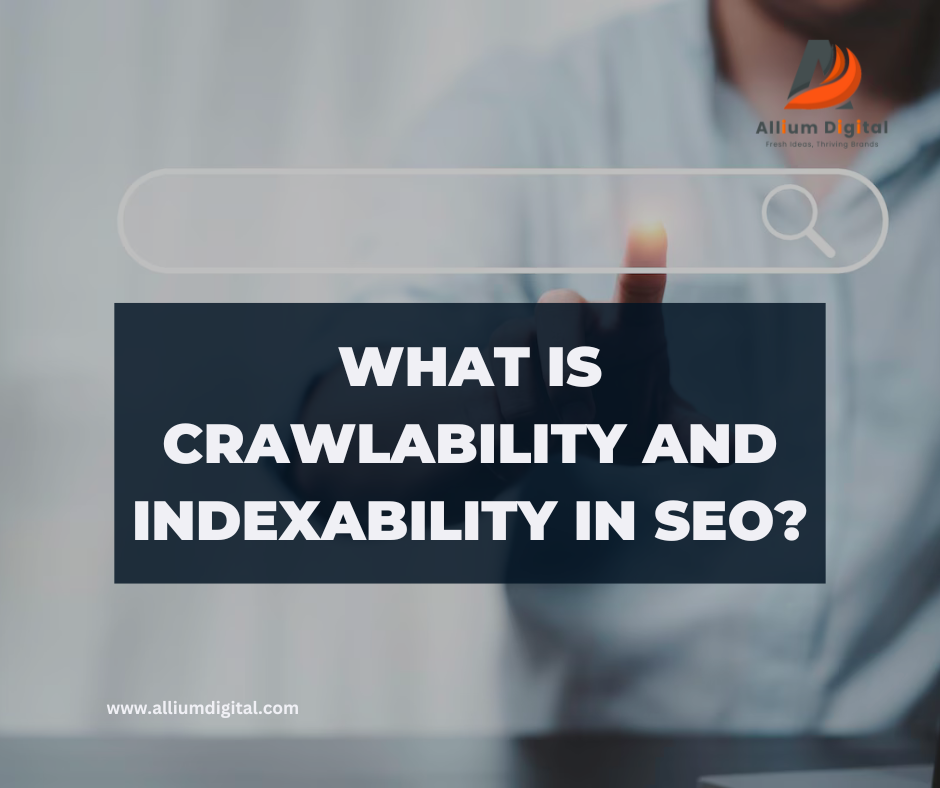So you’ve created a killer website. Great design, smart content, and maybe even a few blog posts you’re proud of. But there’s just one problem: no one can find it on Google.
That’s where crawlability and indexability come in.
These two technical SEO factors decide whether search engines can discover your site and show it to users.
Crawlability is about Google’s bots being able to reach your pages.
Indexability is about those pages being added to Google’s index so they can rank.
Before diving deeper, here’s a quick way to check if your site is crawlable:
Quick Crawlability Test
- Enter your URL in Google Search Console → URL Inspection Tool
- Run a scan with a free crawler like Screaming Frog
- Check your robots.txt file to make sure you aren’t blocking key pages
If you spot issues here, fix them now. Otherwise, even the best content won’t make it into search results.
Why Crawlability and Indexability Matter
If search engines can’t crawl or index your site, your content won’t appear in search results, no matter how good it is.
If you’d also like to know how much it costs to build a website in Kenya, we’ve covered that here.
Let’s break it all down in simple, non-geeky terms.
- Quick Crawlability Test
- What is Crawlability?
- What is Indexability?
- The Relationship Between Crawlability and Indexability
- How to Improve Crawlability
- How to Improve Indexability
- Technical Tools to Check Crawlability and Indexability
- Content Quality and Its Role in Indexing
- Mobile Friendliness and Page Speed
- Structured Data and Schema Markup
- HTTP Status Codes and Their Impact
- Crawl Budget: What It Is and Why It Matters
- Avoiding Common SEO Mistakes
- A Simple SEO Checklist for Crawlability and Indexability
- FAQs
- Conclusion
What is Crawlability?
Definition of Crawlability
Crawlability is your website’s ability to be discovered by search engine bots (also known as spiders or crawlers). If a crawler can’t access your pages, they won’t appear in search results, period. Check out our full article focused on crawlability here.
How Search Engine Crawlers Work
Think of search engine bots as really determined librarians. They scan websites page by page, clicking on every link they find. If everything is organized and accessible, they get what they need. If doors are locked (figuratively speaking), they move on.
Common Crawlability Issues
- Broken internal links
- Robots.txt blocking pages
- Poor navigation structure
- Server errors (like 5XX errors)
What is Indexability?
Definition of Indexability
Indexability refers to a search engine’s ability to analyze and add your page to its massive library (aka the index). Just because Google can see a page doesn’t mean it’ll index it.
The Difference Between Crawling and Indexing
Crawling is the process of discovery. Indexing is the process of storing and showing.
Here’s a metaphor: Crawling is like Google visiting your house. Indexing is like Google taking a photo of the inside and adding it to a catalog.
Common Indexability Problems
- Meta tags like “noindex”
- Duplicate content
- Canonical tag errors
- Low-quality or irrelevant content
Learn how to fix some of these common errors from this comprehensive guide.
The Relationship Between Crawlability and Indexability
Crawlability Comes First
You can’t be indexed unless you’re first crawled. That’s just the rule of the game.
How Poor Crawlability Affects Indexing
If bots can’t reach a page or it’s buried under 10 clicks, it likely won’t be indexed, no matter how awesome it is. That is what is called hiding your page from Google.
Can a Page Be Crawlable but Not Indexable?
Yes. This happens a lot when meta tags or settings explicitly tell bots not to index the page. Sometimes, this is done by accident.
How to Improve Crawlability
Submit a Sitemap
A sitemap is like a roadmap for bots. It tells them where everything is. Always submit one through Google Search Console.
Clean Internal Linking Structure
Make sure every important page is linked to from somewhere. Orphan pages (pages with no internal links pointing to them) often go unnoticed.
Fix Broken Links
Broken links frustrate bots and users. Regularly audit and fix them.
Use Robots.txt Correctly
Don’t accidentally block important folders or pages in your robots.txt file. When in doubt, leave it simple.
How to Improve Indexability
Optimize Meta Tags and Canonical Tags
Ensure your meta robots tag doesn’t say “noindex” on pages you want in search. Use canonical tags wisely to avoid confusion.
Avoid Duplicate Content
Google hates seeing the same content in multiple places. It’s confusing and wastes the crawl budget.
Use Noindex Tags Strategically
Using “noindex” on privacy policies, login pages, or other low-value content is okay. Just don’t overdo it.
Technical Tools to Check Crawlability and Indexability
Google Search Console
Your first stop. Check Coverage reports, Indexing status, and submitted sitemaps.
Screaming Frog SEO Spider
A favourite among SEOs. It crawls your site like Google would and highlights issues.
Ahrefs and SEMrush
These premium tools offer comprehensive audits, crawl maps, and more.

Content Quality and Its Role in Indexing
Fresh, Unique Content Gets Indexed Faster
Google loves new content. Updating your site regularly keeps bots coming back.
Thin Content Can Hurt Indexability
If your content is low-effort or duplicate, Google might skip it entirely.
Mobile Friendliness and Page Speed
Googlebot Mobile Crawler
Since Google’s mobile-first indexing update, mobile usability is crucial for crawling and indexing.
The Impact of Core Web Vitals
Poor performance can limit how often and how deep bots crawl your site.
Structured Data and Schema Markup
Enhancing Search Visibility
Adding structured data helps Google understand what your page is about. Bonus: it can earn rich snippets.
Helping Bots Understand Content
Think of schema as giving bots a helpful cheat sheet.
HTTP Status Codes and Their Impact
200 OK vs 404 vs 301/302 Redirects
200 = All good.
404 = Page not found (bad).
301 = Permanent redirect (good if done right).
302 = Temporary redirect (use carefully).
Soft 404s and Their SEO Consequences
These pages look normal, but return “not found” in Google’s eyes. Fix them ASAP.
Crawl Budget: What It Is and Why It Matters
How Google Decides What to Crawl
Google assigns a crawl budget based on your site’s size, popularity, and health. If you waste it on useless pages, important ones may not get visited.
Optimizing Crawl Budget for Large Sites
Block low-value pages, consolidate similar content, and prioritize high-value URLs.
Avoiding Common SEO Mistakes
Blocking Important Pages in Robots.txt
Double-check your robots.txt file isn’t hiding your key pages.
Using Meta Noindex by Mistake
One misplaced “noindex” tag can take an entire section off Google.
Orphan Pages
Add internal links to every page you want crawled and indexed.

A Simple SEO Checklist for Crawlability and Indexability
Weekly and Monthly Checks
- Check for crawl errors in GSC
- Fix broken links
- Update or refresh old content
- Review robots.txt and sitemap
Essential Tools to Use
- Google Search Console
- Screaming Frog
- Ahrefs/SEMrush
- Sitebulb (for advanced audits)
FAQs
1. What’s the fastest way to get a new page indexed?
Submit the URL via Google Search Console’s “Inspect URL” tool and request indexing.
2. How do I know if my site is crawlable?
Use tools like Screaming Frog or Google Search Console to see if bots can access your pages.
3. Can crawl errors hurt my rankings?
Yes. If critical pages aren’t accessible, it can limit traffic and hurt your SEO performance.
4. Is it okay to block some pages from being indexed?
Absolutely, just make sure you’re not blocking valuable pages by mistake.
5. How often should I check for crawlability issues?
At least monthly. Weekly for larger or frequently updated websites.
Conclusion
Getting your site seen isn’t just about writing great content or having a sleek design. It’s about making sure search engines can find and understand your pages.
By improving crawlability and indexability, you’re removing the digital roadblocks that keep your content in the shadows. Keep things clean, organized, and technically sound, and you’ll start seeing your pages pop up in search results more often.

